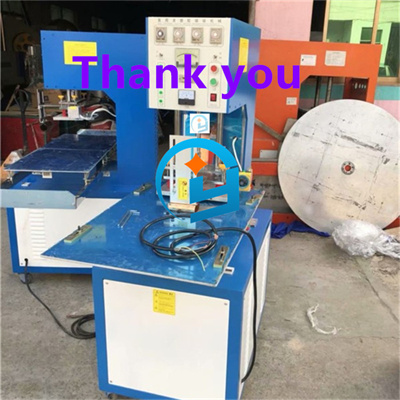
High-frequency machine high-frequency repair
High-frequency machine high-frequency repair is a technical work involving a number of aspects, mainly around the fault diagnosis, investigation and repair of equipment to start. The following is a detailed analysis of high-frequency machine high-frequency repair, divided into common types of failure, maintenance steps and precautions in several parts:
First, the common types of failure
Firing phenomenon:
Reason: too much dust in the resonant cavity, debris in the oscillation barrel, improper spacing of electrodes, etc..
Solution: Clean up the dust and debris in the resonant cavity and oscillation barrel, and adjust the electrode spacing to the proper position.
Overcurrent protection:
Reason: resonant cavity short circuit, component damage (such as rectifier diode, high voltage transformer damage), pipe short circuit.
Solution: check whether the resonant cavity and components are damaged, replace the damaged parts, and check whether the circuit connection is good.
Poor fusing:
Reason: improper setting of high circumference output parameters, mismatch of material types, uneven or aging moulds, etc.
Solution: Adjust the high week output parameters, replace the appropriate material, repair or replace the mould, and make sure the temperature of the equipment is set correctly.

Equipment no output:
Reason: power supply failure, control board failure, electronic tube damage, etc..
Solution: check whether the power output is normal, replace the damaged control board or electronic tube.
Indicator light does not light up or display abnormality:
Reason: fuse blown, indicator lamp damage, control board failure.
Solution: Replace the fuse, indicator or control board.
Second, maintenance steps
Troubleshooting:
Firstly, observe the operating status of the equipment and record the fault phenomenon.
Use a multimeter and other tools to check the circuit connection, component status, etc..
According to the fault phenomenon and inspection results, make a preliminary judgement on the cause of the fault.
Fault confirmation:
Observe whether the fault phenomenon disappears or changes by replacing or disconnecting the suspected fault components.
If necessary, disassemble the equipment to further confirm the cause of the fault.
Fault repair:
According to the cause of the fault, take appropriate repair measures.
Clean dust, replace damaged parts, adjust parameter settings, etc.
Test Verification:
After the repair is completed, carry out comprehensive test verification of the equipment.
Ensure that the various functions of the equipment back to normal, no other potential failure.
Third, the precautions
Safety first: in the maintenance process, be sure to ensure that the equipment has been powered off and in a safe state.
Professional operation: high-frequency machine high-frequency repair involves high-voltage circuits and precision components, it is recommended that professionals to operate.
Spare parts preparation: before maintenance, you should prepare the necessary spare parts and tools, in order to replace the damaged parts in time.
Detailed records: In the repair process, detailed records should be made of information such as fault phenomena, troubleshooting process, repair measures and test results.
Through the above steps and precautions, you can effectively repair and maintain the high frequency machine high frequency equipment to ensure long-term stable operation of the equipment.




